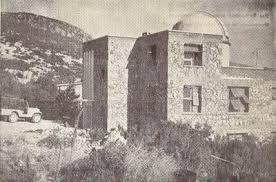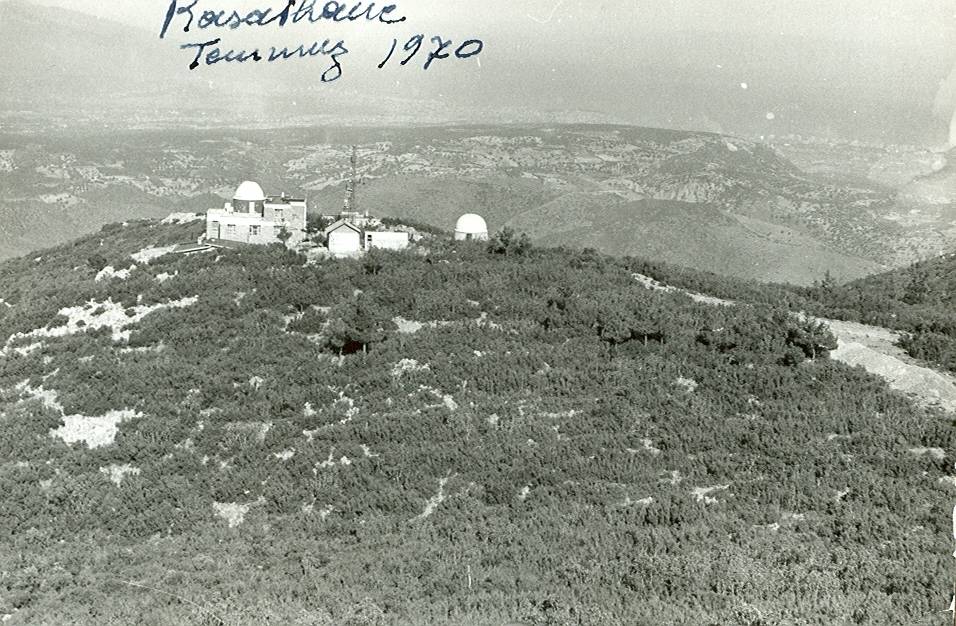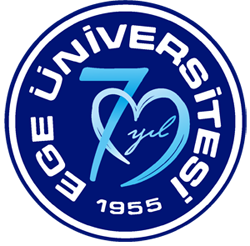History

The Faculty of Science, which is the third faculty of Ege University, which was established with two faculties (Medicine and Agriculture) in the 1955-1956 academic year, was established in the 1961-1962 academic year. The Astronomy Chair of the Faculty was established in the 1962 - 1963 academic year under the direction of the Chair of Mathematics and started teaching activities. Since there was no faculty member in the Astronomy Chair at the beginning, astronomy lessons were taught by Assoc. Prof. Abdullah Kızılırmak and As. Dr. Rümeysa Kızılırmak (from Ankara University Faculty of Science, between 4 – 31 October 1962), Assoc. Dr. Muammer Dizer (as a visiting professor from the Istanbul Kandilli Observatory, between 3 - 27 December 1972). In addition, from October 15, 1962 to January 11, 1963, Dr. Flecktenstein worked in Astronomy Chair as a foreign specialist.

With the appointment of Assoc. Dr. Abdullah Kızılırmak and As. Dr. Rumeysa Kızılırmak to the Astronomy Chair of the Faculty of Science of E.U. on January 8, 1963, the Chair of Astronomy, which left the management of the Chair of Mathematics, took its independent form. In the same year, with the newly appointed assistants, who were appointed to carry out management and teaching services in the same year (Sezai Hazer, M. Ünal Akyol, Şükrü Bozkurt, İlhami Yavuz), the Chair became stronger and took the path of development. In the 1963 - 1964 academic year, Assoc. Dr. Adnan Kıral and Assoc. Dr. Metin Hotinli contributed to the chair as visiting professors.

Prof. Hans Kienle took up his position on the chair on 1 November 1965 on a contract basis. Prof. Dr. Kienle has continued his teaching and research activities at our observatory since this date. In 1969-1970 academic year, Prof. T. L. Swihart and in 1971-1973 academic years Prof. Dr. R. H. Wilson worked as a contract faculty member in our department.
While the Chair of Astronomy was being established, efforts were also made to establish an observatory in order to help astronomy education, to implement the astronomy lessons taught, to provide opportunities for astronomers to be trained, to conduct scientific research, to establish scientific cooperation with national and international observatories, and to carry out activities that would respond to the public's curiosity about astronomy. During the establishment of the chair, all those who took part in the administration and teaching took part in the establishment, operation, observation and scientific studies of the observatory and worked sincerely in its development.
Initially, it was planned to establish the observatory on a small scale and to develop it in parallel with the training of scientists. The construction of the central building and the telescope dome required by the project was undertaken with the great support and assistances of the Dean of the Faculty of Science at the time, Prof. Yusuf Vardar and Ege University Rector Prof. Mustafa Uluöz.
The selection of the region for the establishment of the observatory was made by a commission of three people, Assoc. Prof. Abdullah Kizilirmak, Assoc. Prof. Recep Egemen and foreign expert Dr. Fleckenstein.
Kurudağ Hill was chosen as the most suitable place for the location of the observatory, which is a mountain of heathland at an altitude of 632 m, 17 km south of the university, at the foot of the Kemalpaşa Mountains, coincides with the southeast of Bornova, far from the city lights, its surroundings desolate and dark, as high as possible, its land is solid and rocky, the air is dust-free and close to the university. Since the selected place was distinguished as a forest zone, in July 1963, 8.5 acres of land was leased from the General Directorate of Forestry for 30 years. The first task after that was latitude and longitude determination. The concrete observation pile required for the observations was poured on 19 June 1963 with the efforts of Sezai Hazer. Thus, the first step in the construction of the observatory was taken.
For latitude and longitude observations, a team headed by Maj. Arif Çöklü assigned by the General Directorate of Maps was moved to the observatory site in August 1963 with its tools and all kinds of equipment. Overcoming the difficulties of reaching and living in this region, which had no roads and water at that time, by working day and night for about a month, the Geographic Latitude, Geographic Longitude, Elevation and Gravitational Acceleration values were determined for the point where the triangulation pile is located. In addition to these works, the order of the telescope with a diameter of 15 cm (S. Hazer, 21 June 1963), the tender for the construction of the observatory central building (August 2, 1963), the opening of the letter of credit for the Fucoult pendulum (Ü. Akyol, 8 December 1963), activities continued. Refractive telescope (15 cm. diameter) was brought from abroad on 23 March 1964, Fucoult pendulum was brought from abroad on 30 May 1964.
910 trees were planted around the observatory by the forest administration through the aid of the Ege University Observatory. On the one hand, while the construction of the central building was continued, a generator was provided to meet the energy needs. CENTO donated Quartz and pendulum clocks to our observatory.
The telescope's setup was done collaboratively on 30 - 31 May 1965. The first observation at the Observatory was made by Assoc. Prof. Abdullah Kizilirmak, Dr. Rümeysa Kızılırmak, Sezai Hazer, Ünal Akyol and Şükrü Bozkurt, who made "variable stars" observation on the night of June 22, 1965. This is how variable star observations, which are the main observation and research area of our observatory, started and have survived until today. After that, the development accelerated even more. Our observatory was supported in terms of instruments by various donations. The shortwave radio receiver donated by the German government through Prof. H. Kienle, a 13 cm diameter spectrometer and collimator donated by the German Academy of Sciences, With the initiative of Prof. Abdullah Kızılırmak, the iris photometer donation of the Alexander Von Humbolt Foundation in Germany and the photoelectric observation mechanism and printer donated by the German government are among the most important.
In 1967, the 48 cm diameter mirroring telescope and photoelectric assembly, which was donated by NATO for the "Variable Star Observations" to be held jointly with the Germany Nuremberg Observatory, reached observatory. It was put into service by temporarily setting it up in the dome of the main building, and then it was moved to the dome built on Yıldız Tepe, at an altitude of 800 m. As the years progressed, significant deprivations of work and housing were overcome. In 1970, a central heating system was installed in the central building. In 1970, continuous electrical energy was provided to our observatory by Etibank and drinking water was delivered on 22 June 1972. In addition, road construction to Yıldız Tepe has begun. Prof. Abdullah Kızılırmak was appointed as the first director of our observatory and Prof. Celal Saraç and Ord. prof. Hans Kienle were elected as the member of the Board of Directors.
Our observatory gained legal personality under the name of "Ege University Observatory" in 1967, affiliated to the Faculty of Science, and its regulation was accepted by the Senate's decision dated 26.12.1967 and numbered 30-3 and published in the Legal Gazette dated 27.01.1968. Ege University Observatory gained the status of an institute under the name of Ege University Astronomy Research Institute on 5.11.1976. With the law numbered 2010, which entered into force on 18.05.1976, 2 professors, 3 associate professors, 6 assistants, 4 specialists and 4 researchers were assigned to this institute. However, after the enactment of the Statutory Decree on the Organization of Higher Education Institutions, the title of institute was abolished and it was transformed into the Ege University Astronomy Research and Application Center affiliated to the Faculty of Science with the decision of the Ege University Senate dated 13.04.1982. With the enactment of the Decree Law No. 78, which reorganized the academic staff in universities, on 16.09.1983, all the academic staff of this center were canceled and new staff could not be allocated. After this date, the Observatory continued to serve as a laboratory where observations on educational and scientific studies were made under the Department of Astronomy and Space Sciences. The Department of Astronomy and Space Sciences and Ege University Observatory officials started to look for new solutions due to the inadequacy of existing observation tools and equipment in obtaining more sensitive data and the progress of technology with giant strides. In 2004 – 2005, a new building was built in Yıldıztepe, at an altitude of 800 m, where the A48 telescope is located. Meade telescopes with diameters of 40 cm and 35 cm are installed under the two domes in this new building. Observations continued for a long time with the 30 cm mirror diameter telescope and a photometer attached to it at the renovated building and dome of the old spectrometer, which located near the central building.
Today, scientific studies and activities open to the public are continued.
Managers of Our Observatory
Prof. Abdullah Kızılırmak (1968-1977)
Prof. Raymond H. Wilson (1977-1980)
Assoc. Prof. Ömür Gülmen (1980-1981)
Prof. Sezai Hazer (1981-1984)
Assoc. Prof. Ömür Gülmen (1984-1985)
Prof. İlhami Yavuz (1985-1994)
Prof. Şükrü Bozkurt (1994-1996)
Prof. Serdar Evren (1996-2009)
Prof. Zeynel Tunca (2009-2012)
Prof. Kadri Yakut (2013 - 2016)
Assoc. Prof. Hasan Ali DAL (2016 - Devam Ediyor)










